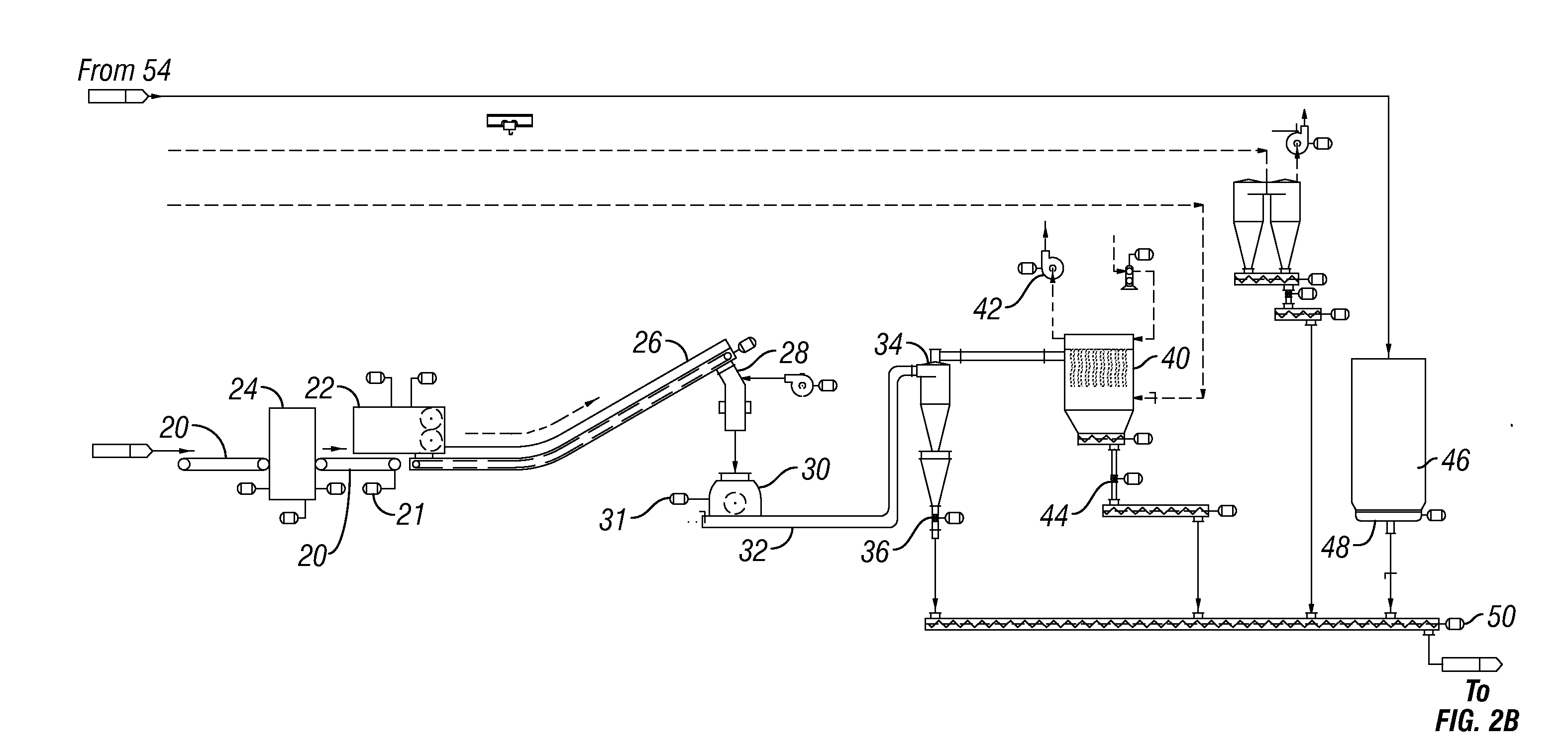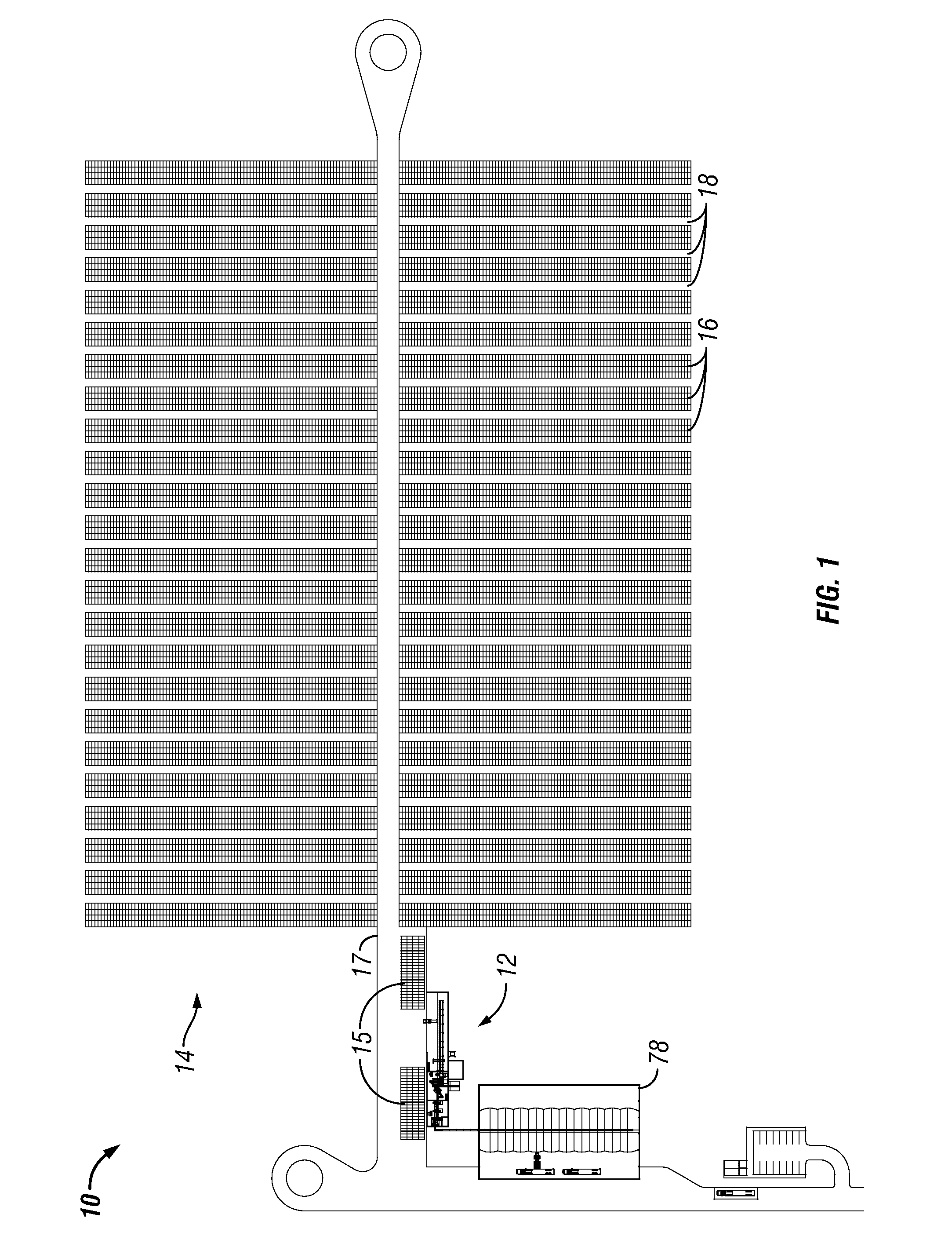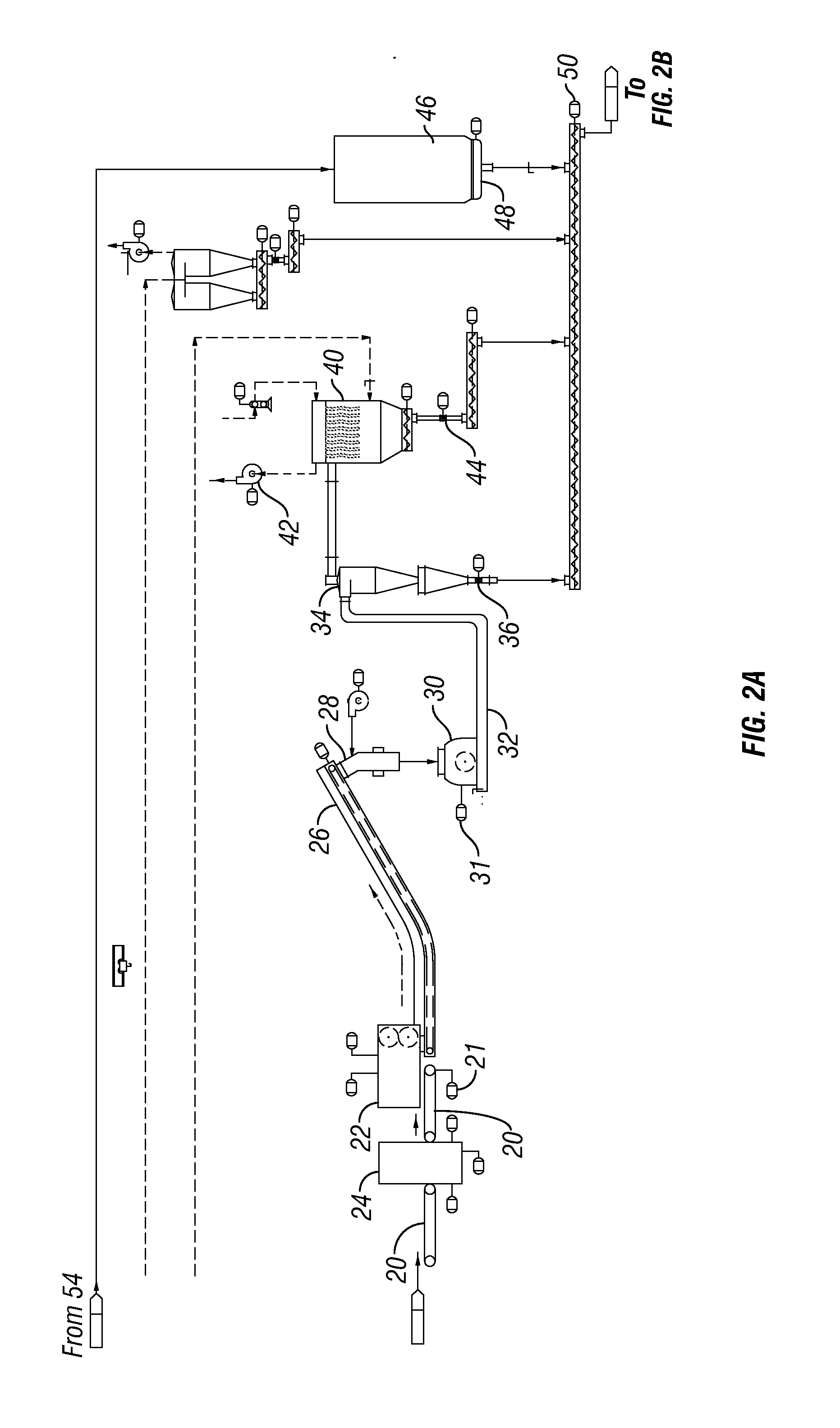Biomass pelletizing process
- Summary
- Abstract
- Description
- Claims
- Application Information
AI Technical Summary
Benefits of technology
Problems solved by technology
Method used
Image
Examples
Embodiment Construction
[0023]The overall objective of the present invention is to efficiently harvest, unload, store, handle, grind, densify, and loadout biomass feed stock. The following description focuses on agricultural residue and energy crops, but it is understood that similar processing pelletizing can be used for other biomass resources.
[0024]The raw material is received as truckloads of baled product and converted into a final pelletized product that can be handled and transported using standard grain handling equipment. This will allow the transportation of pelletized feed stock at maximum allowable loads using standard grain truck and rail transport equipment. Because the handling and transportation costs for the pelletized product is reduced, two or more of these stover collection and processing facilities can be linked into a delivery system for end users having need for increased volumes of pelletized biomass feed stock.
[0025]The overall design and equipment selection has a beneficial impact...
PUM
 Login to View More
Login to View More Abstract
Description
Claims
Application Information
 Login to View More
Login to View More - R&D
- Intellectual Property
- Life Sciences
- Materials
- Tech Scout
- Unparalleled Data Quality
- Higher Quality Content
- 60% Fewer Hallucinations
Browse by: Latest US Patents, China's latest patents, Technical Efficacy Thesaurus, Application Domain, Technology Topic, Popular Technical Reports.
© 2025 PatSnap. All rights reserved.Legal|Privacy policy|Modern Slavery Act Transparency Statement|Sitemap|About US| Contact US: help@patsnap.com



